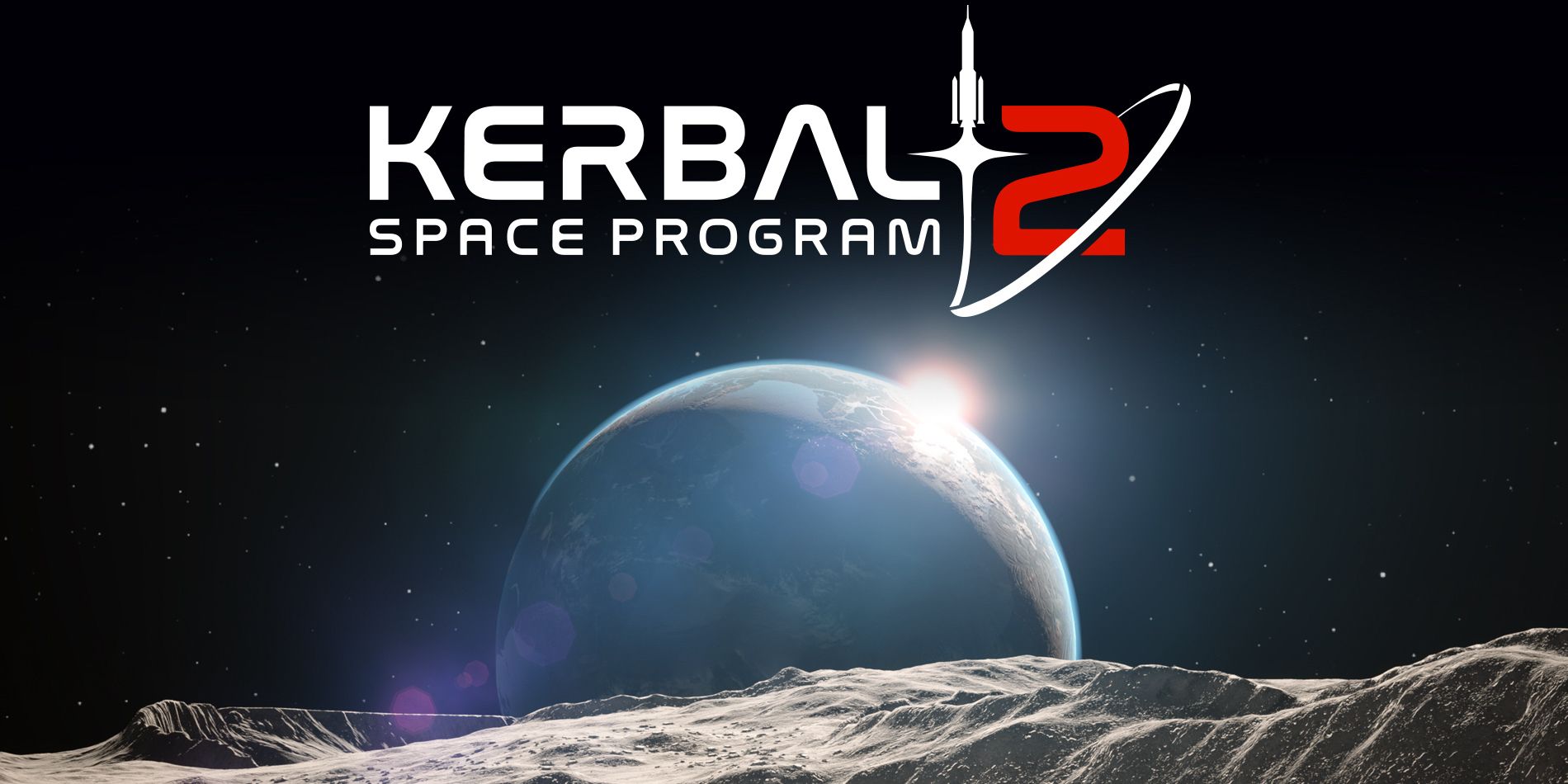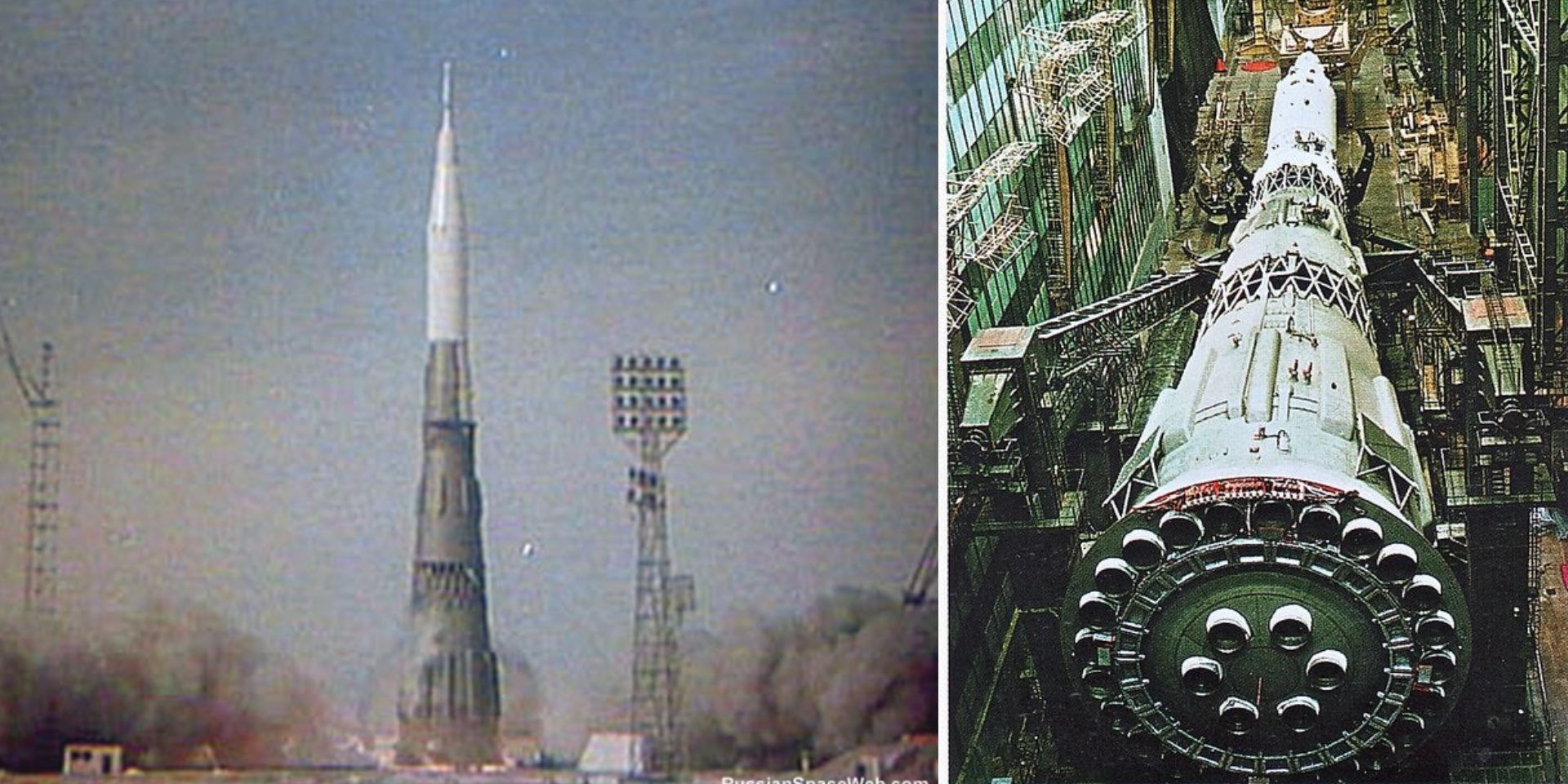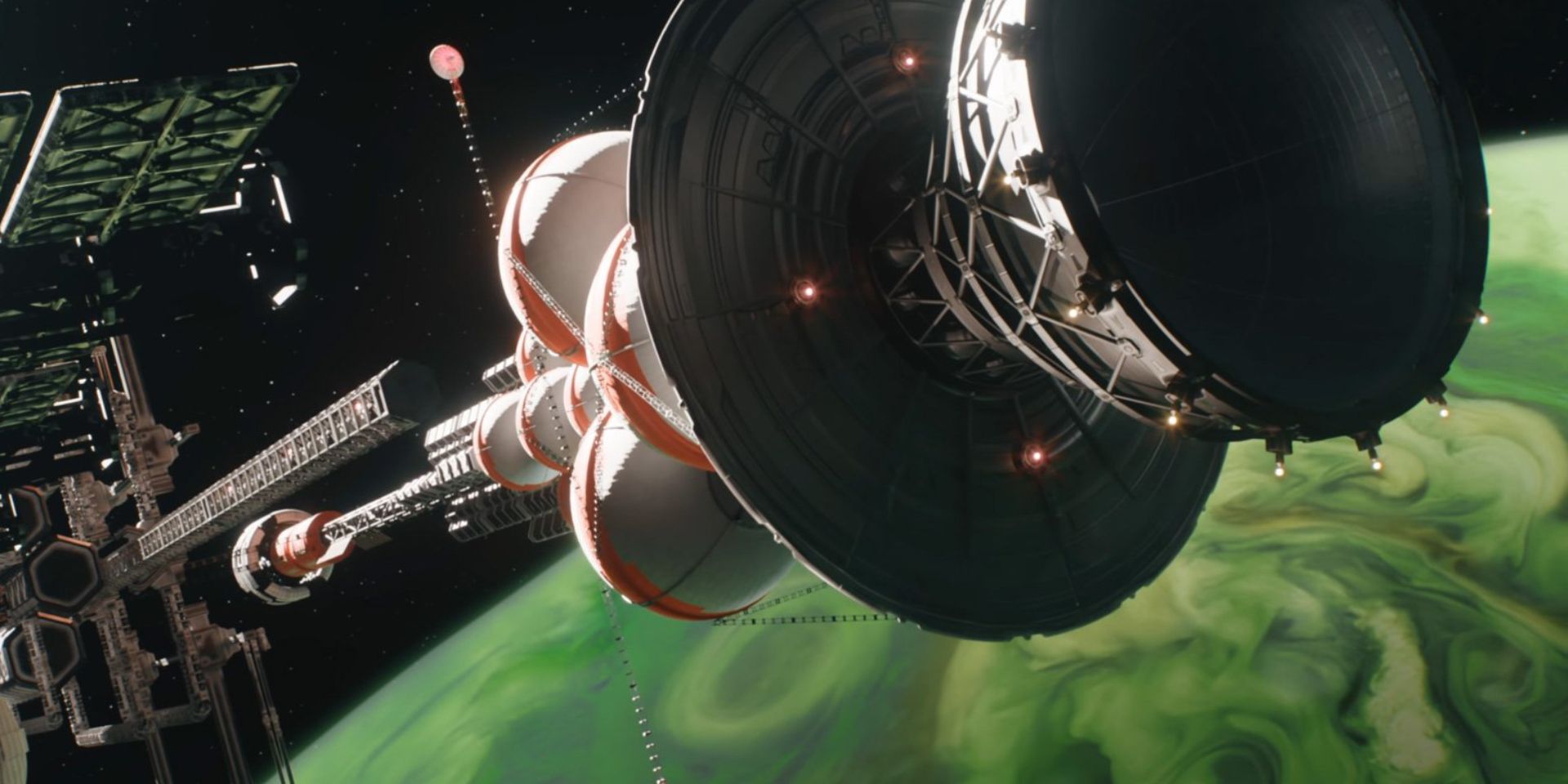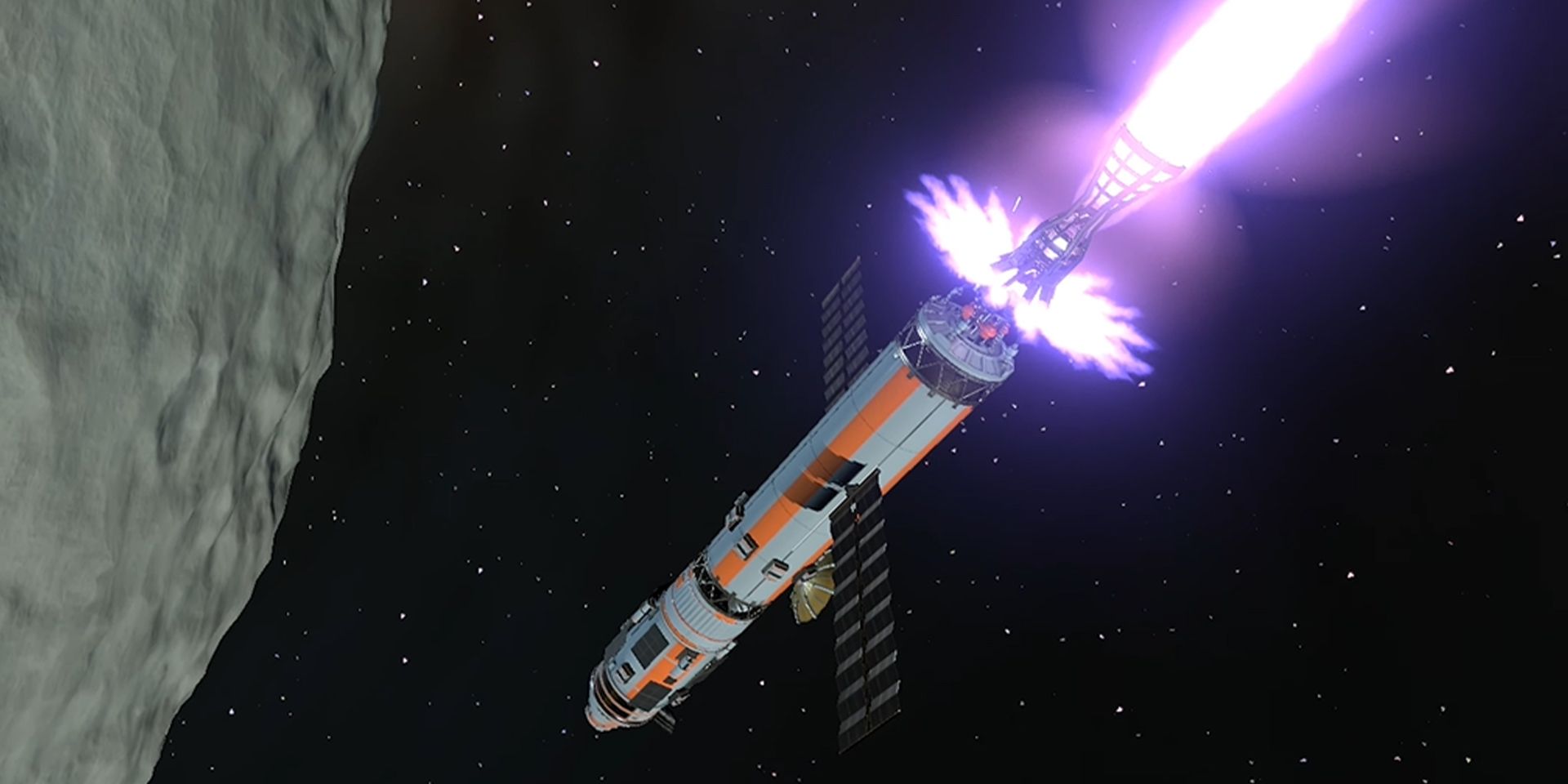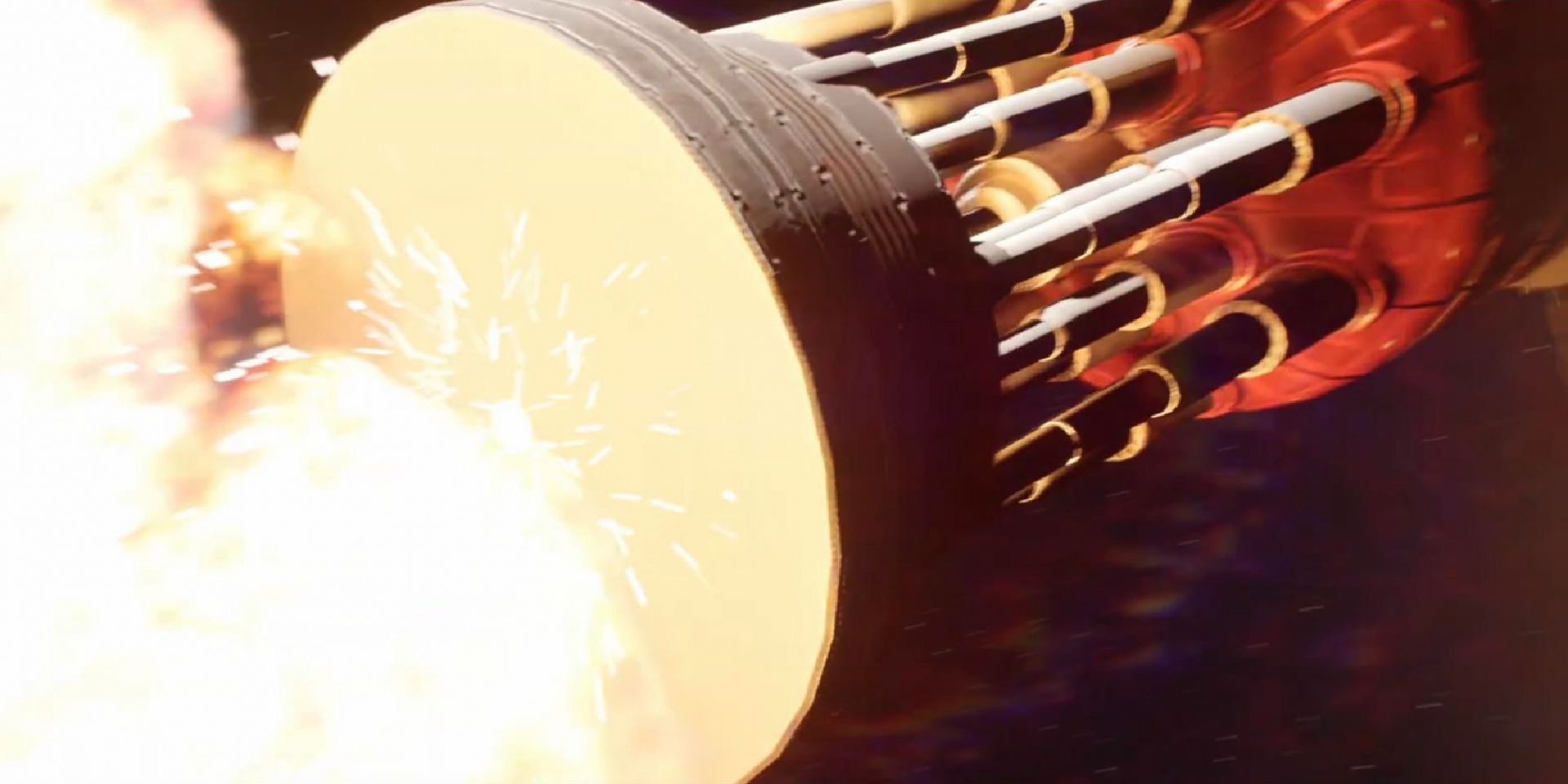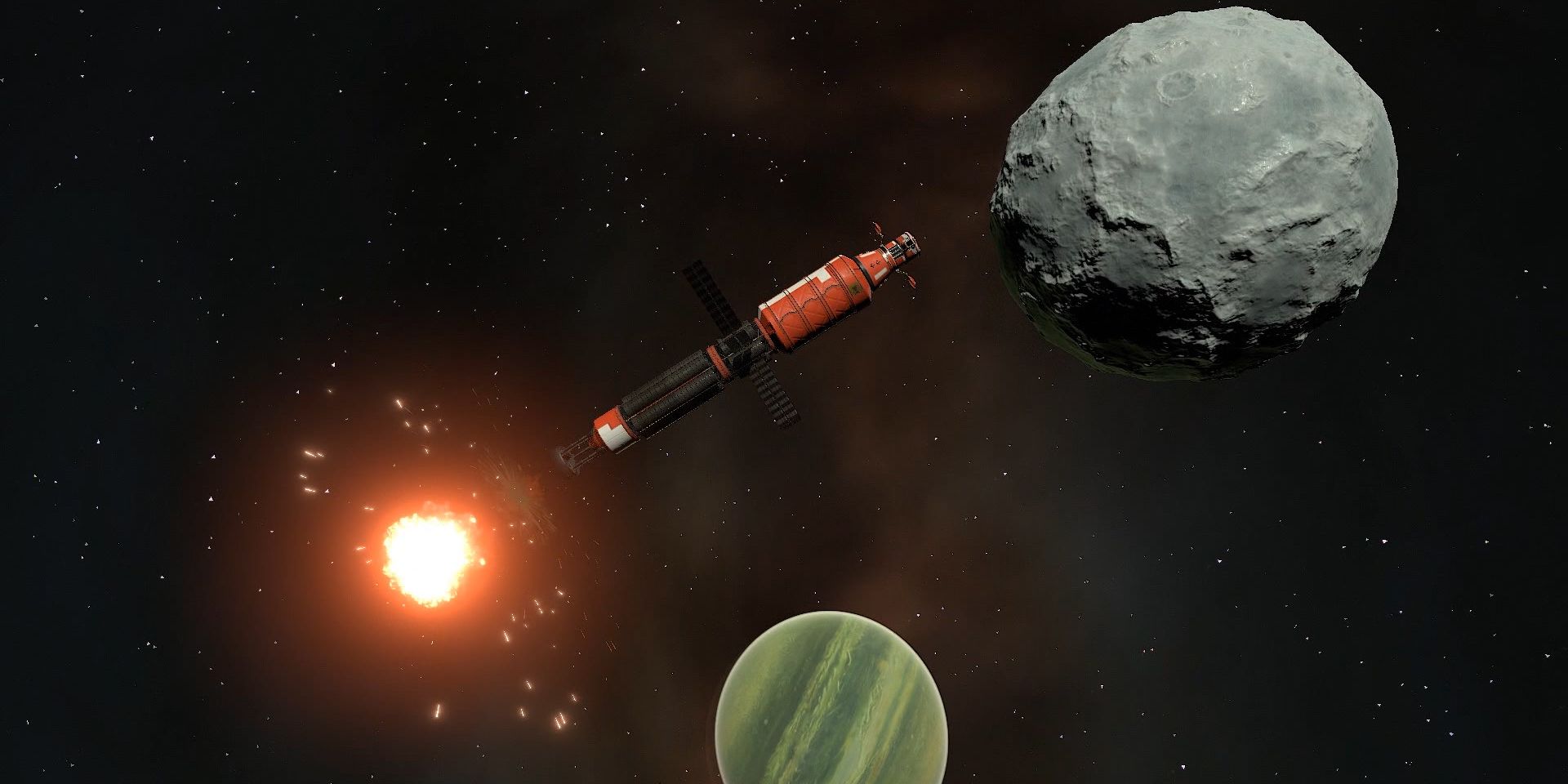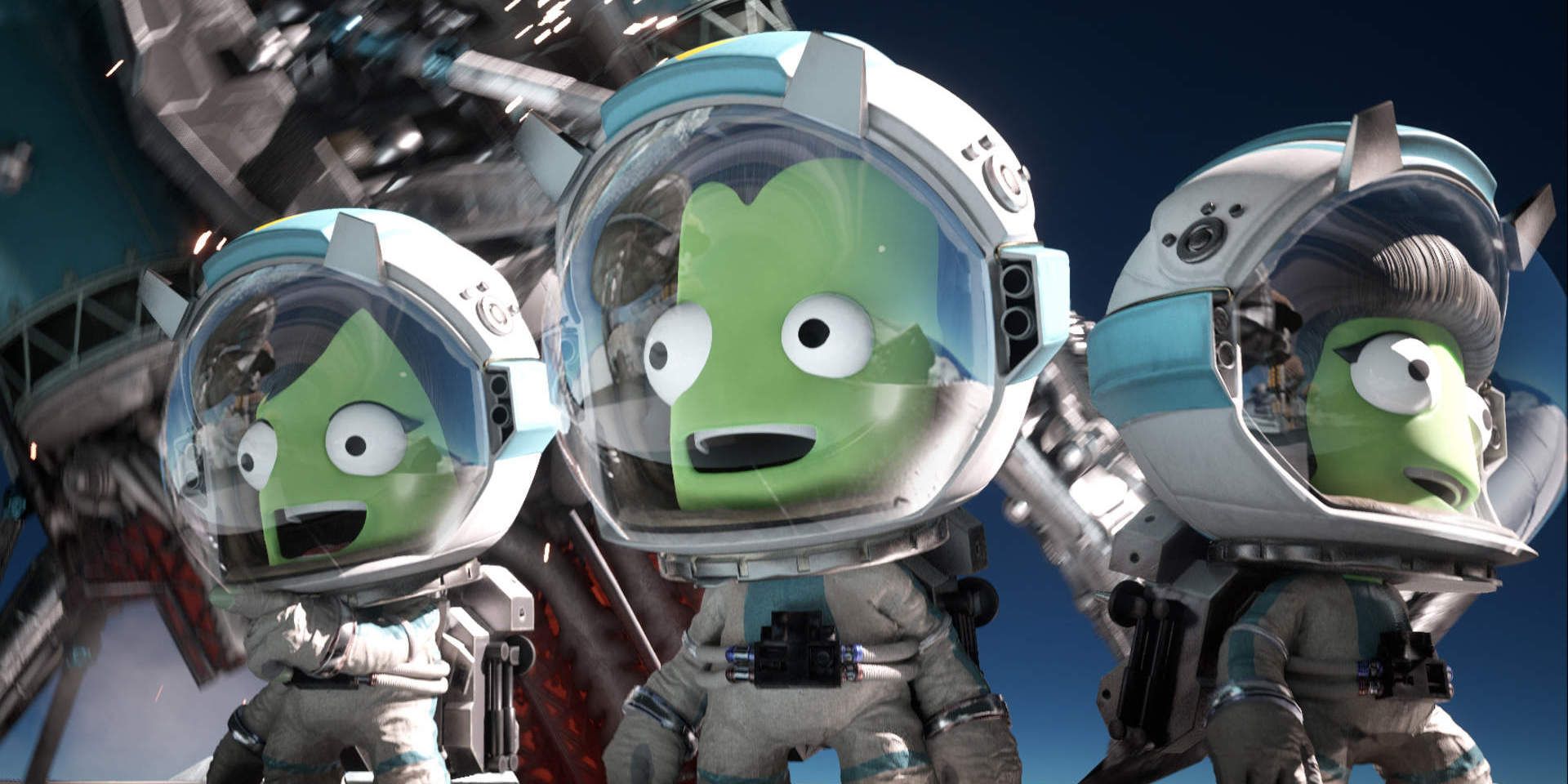Besides announcing the upcoming release of Kerbal Space Program – Enhanced Edition on the PS5 and Xbox Series X/S, Private Division also recently revealed new information about Kerbal Space Program 2. It's a sequel that builds on the original game with new space-travel technologies, new mission modes, and the late-game ability to construct massive interstellar spacecraft and voyage to other stars.
In an interview with Screen Rant, Creative Director Nate Simpson waxed eloquent about his love for the original Kerbal Space Program, his hopes of making the realistic space travel gameplay of the franchise more accessible, and how the Russian N1 launch vehicle is an under-appreciated gem of spaceflight history.
While discussing Kerbal Space Program 2 with Screen Rant, Nate Simpson, currently hard at work on KSP 2 with his colleagues at Private Division and Intercept Games, talked openly about his love of the original Kerbal Space Program and his team's commitment to building on and strengthen the formulas established by developers of the previous game. In the process, he also dropped some intriguing details and hints about new gameplay mechanics Kerbal Space Program 2 will introduce to take the little green Kerbal protagonists of the franchise from "1960/1970s space program astronauts" to "cosmopolitans of an interstellar society."
In the last interview, I talked with the developers at Squad about what their favorite real-life rocket ships are. If it's not too imposing a question to ask, what would you say your favorite real-life rocket ship is?
Nate Simpson: Oh, man. That's like asking who’s your favorite child? In terms of pure capability, it's hard not to be in love with the Saturn V. But I have always thought it was a great tragedy that we never got to see an N1 rocket, the Soviet moon rocket, actually achieve orbit - let alone fly to the moon.
I've heard that there was actually a couple of them that never flew and that were scrapped. The notion that I don't get to visit this thing, which was comparably large to the Saturn V - it actually had a larger core size for the first stage... it's just the most insane rocket that's ever been built, and I wish I could behold it. And there's nothing to see! There's no tangible object to go visit.
I hope at some point, somebody wealthy decides they want to build a life-size replica. That would definitely be my choice.
I've heard it said that the N1 rocket design is an example of engineering comparable to some of the wild things players get up to in the Kerbal Space Program games: way too many boosters, very complicated, but also audacious at the same time.
Nate Simpson: And the minimal amount of testing prior to the first launch, which I think is very Kerbal as well. It is kind of interesting that one of the biggest liabilities for the N1 was the unreliability of its many engines. But it's only a few more engines than the Falcon Heavy has. So it turns out if you've got well-tested reliable engines, the high engine count is actually something that can work really well.
They had the right idea, but they may have needed a little more time and money to pull it off.
On the note of far-out propulsion and space travel concepts, the trailer for Kerbal Space Program shows all sorts of snapshots of spectacular spacecraft designs. One of the big new features announced is the ability to build truly interstellar starships that can travel to star systems light years away. Can you give us a hint as to how it'll play out in campaign mode?
Nate Simpson: To start, I should point out that we have a colony building system, and that includes colonies that can be built in orbit. For any colony on the ground or in orbit, you can now build vehicles - provided that you transport the necessary resources to that colony, and the colony is expanded enough and is at an advanced enough technology level that it can build the vehicles.
You are then, especially with orbital construction, able to build vehicles of relatively unbounded scale. Because you're not having to crawl out of a deep gravity well with whatever it is you're building, it's much more of a Star Trek kind of a vibe, where you're pulling away with something very, very big.
As far as how it works with the progression, one thing I like about it is that - as with anything else in Kerbal, there are a lot of different ways to go about interstellar exploration. If you are a fastidious person, you might send numerous un-crewed missions; perhaps un-crewed missions that have multiple sub-probes to deploy once you've entered the sphere of influence of a new star. You're gathering as much information as you can about local conditions on multiple celestial bodies, and then you're tailoring whatever vehicle you send to the conditions that you know will be there at the destination.
But the approach that I have a very soft spot for is the more generalist multi-tool vehicle - which is again sort of a Star Trek thing, to just create a mothership that has a bunch of small general purpose exploration craft attached to it, and a large amount of raw materials that you can use to do a lot of different things when you arrive at the destination. I can guess what I might have to contend with at the destination, and then YOLO. Just send it across and see what happens. That to me feels a little more Kerbal, but I'm not here to tell anybody how to play the game. I like that you can play how you feel comfortable.
If you do want to make a “big freaking rocket” in Kerbal Space Program 2 that can go anywhere in the solar system, what propulsion systems in the game’s module lists would you recommend?
Nate Simpson: We haven't revealed every engine that there is in KSP 2, but we have revealed several of the ones that are available. And I would say, in terms of interplanetary exploration - especially if I'm wanting to land something in a deep gravity well - metallic hydrogen is pretty hard to beat. We have some metallic hydrogen engines that have a very, very high thrust-to-weight ratio, and they make landing in places like Tylo, which have relatively deep gravity wells but no atmosphere to slow you down, gentler. Similarly, when lifting back off from places like Eve, the interplanetary progression gets a little bit gentler once you've mastered metallic hydrogen.
Of course, we give you that right around the time that you're beginning to try to crack the nut of interstellar exploration. So, as soon as one thing gets a little bit easier in the game, another thing gets commensurately harder. We're always trying to balance things, so there's an interesting challenge at every point in the progression.
I think I've heard that metallic hydrogen as a propulsion system might be extremely volatile and explosive?
Nate Simpson: That is probably true. I think metallic hydrogen is maybe on the more speculative end of the propulsion technologies that we've added to the game, and there's a small amount of controversy about that even on the Kerbal forums.
We do our best to keep things within the realm of the plausible and to root things in real science, but nobody has managed to create any more than a very, very tiny amount of metallic hydrogen - or let's say room temperature stable metallic hydrogen, which they've done between diamond anvils at very, very, very high pressures and at very small scales.
So, it's an open question about whether we'd be able to synthesize it in large enough amounts that it could be used as a rocket fuel. And it's another open question about how stable it would be, how easy it would be to store in the long term, or how it would respond to vibrations or changes in temperature. If we really knew the secret to metallic hydrogen, we wouldn't be making a video game; we would be taking that knowledge to the bank and changing world history.
Nate Simpson: But as it is, we thought it was a compelling enough technology. And we're pretty excited about the engine capabilities that are enabled by that. It actually, I think, performed a pretty useful function in our general engine progression. It's a nice gateway technology between traditional methods of methalox rocket fuels and nuclear pulse, which is a stream of tiny atom bombs.
[Science Disclaimer: As of this interview date, scientists still haven’t cracked the puzzle of synthesizing metastable metallic hydrogen rocket fuel in large amounts. Some think a large concentration of metallic hydrogen will explode at the drop of a hat, while others worry it’ll melt the nozzles of rockets or quickly decay if not kept pressurized/frozen. When engineers finally make it, they’ll understand its properties more.]
We actually see a brief clip in the cinematic trailer of what you just described: a nuclear pulse engine. Can you tell us a bit about how it works? Who came up with it on the drawing board, and when do you unlock it in the game progression?
Nate Simpson: Sure. As far as adding a new engine type to the game, adding the Orion drive style nuclear pulse propulsion was actually on the less challenging end of the spectrum, in terms of ideation; figuring out what it would look like and how it would behave. Mostly because it is the technology that came closest to fruition in the real world.
There was a fairly mature project in the 1950s and 1960s that was cut off by the partial Nuclear Test Ban Treaty. But the physics is pretty well understood, and the idea is sound. They even got to the point of testing pulse propulsion with conventional explosives. There's some crazy videos you could find on YouTube of that. Everyone knows what those will look like, so in some ways, it is one of the most easily recognizable future technologies in our game.
As far as when it unlocks the progression, I wouldn't get too detailed about that right now, because we're playing a lot with the balance of the game. And if I tell you when it comes in the progression, it will actually give away a little bit about the resources that are needed to unlock that technology. So, I realize now I can tell you nothing on that count, and I apologize. I just don't want to give away anything. If I tell you where you're going to dig up uranium, then that's gonna ruin things entirely.
[Science Disclaimer: Nate Simpson is talking about Project Orion, a real-life initiative to design a spaceship propelled by atomic bombs ejected and detonated behind a massive pusher plate. This project was conceived in the 1950s by nuclear scientists Ted Taylor and Freeman Dyson (the same physicist who came up with the Dyson Sphere concept). Science fiction writers love to write alternate history scenarios where Project Orion spaceships actually got off the drawing board.]
Well, you have revealed to me that there will be multiple resources you can harvest to make the building of certain modular components possible!
Nate Simpson: This is correct. There is a much wider variety of resources that you can harvest. We even have a system that lives alongside the colony system that's called delivery routes, and what it allows you to do is automate resource collection and resource transfer missions that start and end at a colony. So, if I want to just go dig up some stuff somewhere with a specialized drilling vehicle, and then bring it back to a colony? Once I return to the colony, I can make that a delivery route. And then I will continue to receive that amount of that resource in perpetuity, and I can move forward to go find other stuff.
Similarly, when I'm transferring resources from one colony to another, I can automate those kinds of missions as well. So, there are many more resources in KSP 2 than there were in KSP 1, and some of them are very far flung or involve the conquering of a new physics challenge or a new kind of mission in order to access that resource. We think it really enriches the gameplay, and once you've achieved that mission, you're rewarded with a new capability. You're rewarded with a new kind of part that you can build or a new kind of vehicle architecture.
In my mind, it's a pretty compelling player goal. You get new capabilities when you find these things.
If I understand correctly: when a player pulls off a successful mission to a new planet, new moon, or new asteroid, they unlock the ability to send automated cargo ships between that location and the location they started from, using the same flight path they manually flew?
Nate Simpson: It's a little simpler than that even. It's really just: if you go dig up some rock somewhere and bring them back to a colony, you can automate that mission. If you've gone to a new place that has a new kind of rock on it, then feel free to bring it back and automate that mission.
That does sound like a much more straightforward way to go about it.
Nate Simpson: We just didn't want people to get to spend huge amounts of time grinding on getting a certain amount of a resource to a vehicle construction location. We feel like once you've solved the challenge of accessing and obtaining a resource, the real fun lies in then leveraging that capability to seek out some new challenge as opposed to repeating the same mission over and over.
It's been said in several other interviews that one goal of Kerbal Space Program 2 is to make the space travel gameplay more accessible without stinting on the difficulty level and genuine challenge. Can you tell us anything about how you'll be using tutorials and campaign missions to help players bridge this gap between the nature of realistic spaceflight and their own preconceptions?
Nate Simpson: Yeah, I think it's helpful to dig into my first-time user experience in the original KSP. It's a story that I hear fairly frequently, and it's not a secret that it's a difficult game. Not only is it really difficult to play, but difficult to get into - there's a large amount of jargon, there's a lot of stuff hidden on hotkeys. The tutorials are mostly text-based, so you're learning by reading.
My journey and the journey of many people I've spoken to has involved hitting that cliff, not even being able to get a rocket anywhere close to space, and then going to YouTube and watching Scott Manley videos and trying to figure out orbital mechanics via YouTube. And then you come back and apply what you've learned. But what you discover once you've begun to pick up those concepts, is that while the game is challenging and never really stops being challenging - partly because you're able to continue to reset your own goals - that it can be [rewarding]...
Sorry, I'm getting lost in my own solutions to these problems.
The other developers at Squad talked about how there's a unique dynamic of making mistakes in KSP and learning from them, eventually “screwing up your way to victory and triumph.”
Nate Simpson: It is exactly that. But what we want to do is make sure that you're able to fail constructively in KSP 2. What we've discovered is that if we create a new set of tutorials that actually have animations, that are teaching these concepts in an intuitive and entertaining way, that we don't actually need to make the core gameplay easier. Instead, the analogy I've been using is that we're not asking you to climb Mount Everest in your street clothes. We're at least going to give you a parka, and we're going to try to equip you for that climb so that you're more likely to be able to learn from your failures.
Because we've discovered that there's two kinds of failure that you can experience in the game. There's constructive failure, which is a failure from which you extract meaningful data that can inform a future vehicle, and frustrating failure. That is, "I don't know what went wrong. And now in order to get past that, I've got to go somewhere else. I've got to go online, or I've got to ask people on the subreddit why this is happening to me."
Our founding theory for this game is that we can drastically reduce that frustrating type of failure, so that you're getting more out of the experience earlier in the experience. But you're still having to conquer that Mun Mission, because we don't want you to lose that feeling of ultimate triumph. The first time I landed on the Mun, I was hopping up and down. I was shouting out loud, and my wife thought I was insane. We want it to still be that fulfilling experience when you do finally land on the Mun, but we believe many more people should be able to behold the magic diamond of awesomeness. That's what we call the core of the gameplay of the original Kerbal Space Program.
We just want to take away whatever onion layers are obscuring that so that more people can be hold and appreciate it.
When Kerbal Space Program 2 does come out, what effect do you hope it'll have on how developers design spaceflight in video games? Or how makers of media like TV shows and movies portray space travel? And how the average gamer thinks of space travel?
Nate Simpson: I don't know that I've thought too much about how it would affect specific media, or how would affect the creation of other games.
You would probably be the first to point out that the original Kerbal Space Program has already affected the way people make games. There have been a number of other space sandbox style games that have come out since the original KSP came out. And I think there is a sensibility there around creating a universe that doesn't make you do anything or ask you to do anything, but that is quieter, more beguiling. This is a big, beautiful place, and here are some universal laws that will determine what you are and are not capable of doing.
But beyond that, it's almost an artistic medium. You can make whatever you conceive of here; go nuts. And I think that's a big part of why I fell in love with the original Kerbal Space Program. It was never telling me to do anything; it was just this, this horizon, and I could go in any direction. I think that's also probably why I have been able to play it as long as I have. I'm a couple 1000 hours into it now, and it still continues to be enthralling. Now I play it with my kid, and he's totally obsessed with it as well.
There's, there's something magical about a game continuing to be an interesting challenge; something that holds your attention, and you're still thinking about it in the shower - that level of holding your attention after 10 years of existence. I think a big part of the challenge for KSP 2 is to preserve that at all costs. We're not here to hold your hand and tell you what to do. We've expanded that universe even more, and I believe we've created even more beguiling and compelling destinations for you to explore. Hopefully that sort of answers your question.
Kerbal Space Program 2 is currently slated for launch on PC, PlayStation 5, PlayStation 4, Xbox Series X|S, and Xbox One sometime in 2022.

